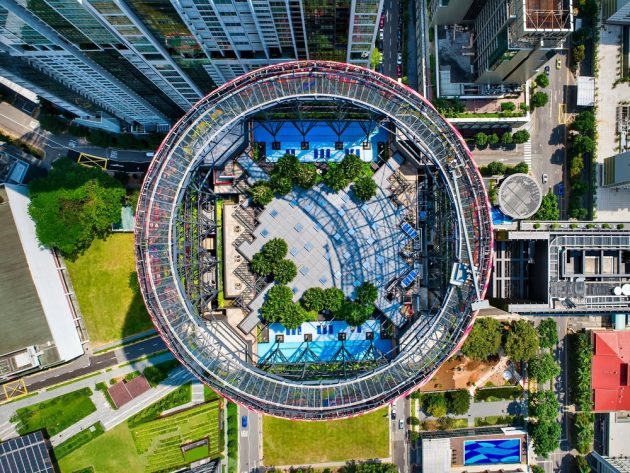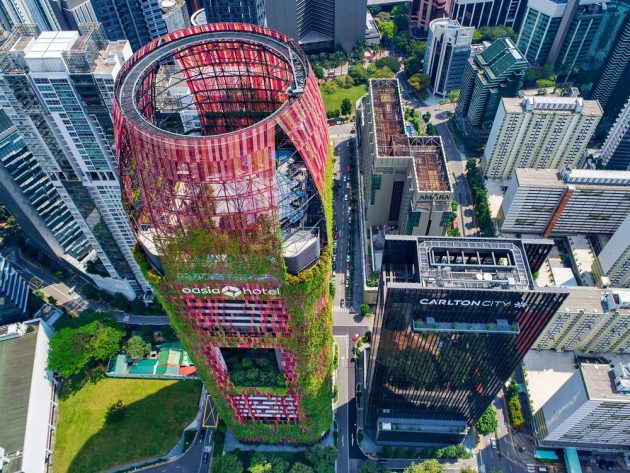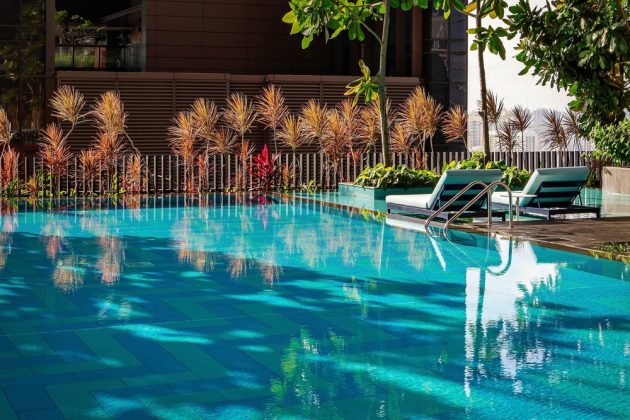A tropical skyscraper by WOHA and Patricia Urquiola: Sustainability and delight
To talk about a fantastic project heading in the central business district Singapore is The Oasia Hotel. This is a very unique project by all means and standards, which redefines a high-rise in humid tropical climates. In contrast with the completely sealed-off, conventional, air-conditioned tower, this hotel is sketched by local office WOHA. WOHA has merged the nature, architecture, and also combined the indoor and outdoor spaces in a remarkable fashion. This article is based on the information provided by v2com.

According to the architects, the aim was ‘to create an alternative imagery for commercial high-rise developments. It combines innovative ways to intensify land use with a tropical approach that showcases a perforated, permeable, furry, verdant tower.’
The tower contains four large outdoor spaces: three tremendous verandas on the 6th, 12th, and 21st floor, and moreover a roof terrace also which is on the 27th floor. It also has a height of 190 metres. The roof terrace on the 27th floor is all over protected and enclosed by a 10-storey-high screen. However, just like the rest of the tower, it is covered in the similar red aluminum mesh cladding. The front of the building will be gradually overgrown by 21 species of vines and creepers. This creates a very deep impact on viewers.
The Oasia is, like the majority of WOHA’s work, located in Singapore. WOHA was founded in 1994 by Singaporean Wong Mun Summ in partnership with Richard Hassell, who hails from Australia and moved to Singapore in 1989.
Humorless earnestness is accompanying the race of sustainability and WOHA has shown that it stands apart from this. A part of an eponymous chain is The Oasia Hotel, which links the two very prominent terms in the office’s design philosophy that is sustainability with delight.
Aside from the red façade – soon to be completely green – the sky gardens also offer greenery, fresh air, and opportunities for natural cross-ventilation, as well as representing the most visibly sustainable and delightful, aspects of the building.
There were responses given to the client’s brief by the sky gardens, which were asked for various parts of the hotel. In a small footprint presented, WOHA disclosed that it adopted a club sandwich approach in which a series of different strata are created and each of them has its own sky garden. WOHA describes these sky gardens as an elevated ground level that also permits the limited ground floor space to get multiplied. This becomes a new source of recreation and social interaction.

On one side where WOHA is given credits for designing the architecture of the tower and the idea of stacking layers, but on the other hand, the actual designing of these sky gardens is done by Patricia Urquiola, the Spanish designer and architect. She was the mind behind all the interiors and the outdoor spaces of the hotel. She added the breezy elegance to the quirky architecture of WOHA.
AGROB BUCHTAL tiles from the Chroma series has been used for the designing of the pools on the 21st and 27th floor. Each pool of the floor holds a different significance as the sixth-floor pool is part of the gym and a stylish extension of lounge club is there on the 21st floor. The right and left side of the pool is styled with dark and light blue chevron pattern and also a wading pool.

The rooftop pool is a combination of two parts and there is a classy rooftop restaurant on both sides of the pool. This rooftop does not have amenities like other rooftops in the hotel, as here it is completely concealed with the vegetated screen. This highlights the WOHA’s architecture unconventionality. It also provides a good space for tranquillity and intimacy and will act as a good escape from the bustle of the city.
About AGROB BUCHTAL: As a specialist in architectural ceramics, AGROB BUCHTAL offers an extensive portfolio of products and services for contemporary and forward-looking building and design using ceramics. The company’s history dates back into the 18th century. Today, AGROB BUCHTAL is a global player firmly rooted in Germany. The richly-varied tile collections and special tailored solutions are used all over the world – on the facade of a prize-winning residential complex in London or on the roof of the Museum of Cultures in Basle, in a swimming pool in Shenzhen, on a promenade in Abu Dhabi or in Munich’s underground railway network.
Image credit: AGROB BUCHTAL via v2com


